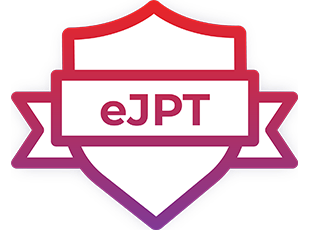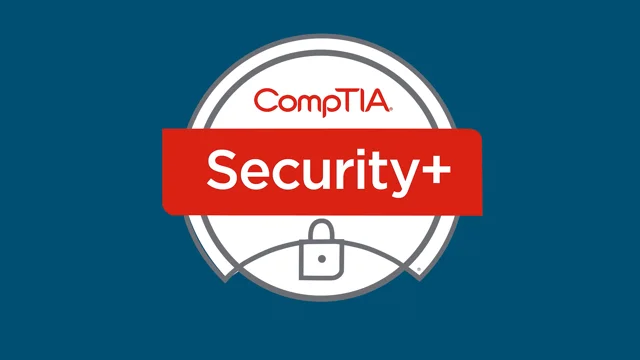Note: Much of the below information is summarized from Alexis Ahmed’s and Josh Mason’s eJPT training videos hosted on INE Penetration Testing Student learning path. Much credit goes to their expertise! Check out their training materials in the sources
Continuing with my notes from studying for the INE Junior Penetration Tester (eJPT) exam. The exam breaks down its curriculum into several sections, and this portion of my notes covers the “Exploitation” and “Post Exploitation” content.
Please keep in mind these are only my notes, and should not be used as the sole resource to study for the eJPT certification. Much of the necessary material is learned through interactive labs found in the Penetration Testing Student learning path. Additionally, the course constantly updates its material to remain up to current, meaning some of the below content may be out of date/missing important details.
- Exploitation
- Post-Exploitation
- Sources
Exploitation
- Exploitation: the techniques and tools used by adversaries/pentesters to gain an initial foothold on a target system or network
- Cross-Compilation: the process of compiling code for a platform other than the one performing the compilation
- Bind Shell: type of remote shell where the attacker connects directly to a listener on the target system, consequently allowing for execution of commands on the target system
- Reverse Shell: type of remote shell where the target connects directly to a listener on the attacker’s system, consequently allowing for execution of commands on the target system
- Defense Evasion: techniques that adversaries use to avoid detection throughout their compromise
Anti-Virus (AV) Detection Methods
- Signature Based Detection: an AV signature is a unique sequence of bytes that uniquely identifies malware
- Heuristic-based detection: relies on rules or decisions to determine whether a binary is malicious
- Also looks for specific patterns within the code or program calls
- Behavior Based Detection: relies on identifying malware by monitoring it’s behavior
- Often used for newer strains of malware
Anti-Virus Evasion Techniques
On-Disk
- Obfuscation: the process of concealing something important, valuable, or critical
- Reorganises code in order to make it harder to analyze or reverse engineer
- Encoding: process involving chaining date into a new format using a scheme
- A reversible process, data can be encoded to a new format and decoded to its original format
- Packing: generate executable with anew binary structure with a smaller size and therefore provides the payload with a new signature
- Cypters: encrypts code/payloads and decrypts the encrypted code in memory
- The decryption key/function is usually stored in a stub
In-Memory
- Focuses on manipulation of memory and does not write files to disk
- Injects a payload into a process by leveraging various Windows APIs
- Payload is then executed in memory in a separate thread
Tools
- Netcat: AKA TCP/IP Swiss Army Knife, networking utility used to read and write data to network connections using TCP or UDP
- Available for both *NIX and Windows operating systems
- Utilizes a client-server communication architecture with two modes
- Client Mode: used to connect to any TCP/UDP port as well as a Netcat listener (server)
- Server Mode: used to listen for connections from clients on a specific port
- revshells.com: website to help generate reverse shells based upon requirements
- Shelter: AV evasion software to disguise shellcode/payloads
- Found:
shelterproject.com
- Found:
- Invoke-Obfuscation: open source PowerShell v2.0+ compatible PowerShell command and script obfuscator
- Found:
https://github.com/danielbohannon/Invoke-Obfuscation
- Found:
Post-Exploitation
- Post-Exploitation: the final phase of a pentest consisting of the tactics, techniques, and procedures that attackers/adversaries undertake after obtaining initial access on a target system
- Process: an instance of a running executable/program
- Service: a process which runs in the background and does not interact with the desktop
Post-Exploitation Methodology
- Local Enumeration
- System Information
- Users and Groups
- Network Information
- Services
- Automating Local Enumeration
- Transferring Files
- Upgrading Shells
- Privilege Escalation
- Persistence
- Dumping and Cracking Hashes
- Pivoting
- Clearing Tracks
Windows Enumeration
System Enumeration
hostname: provides the name of the computer/devicesysteminfo: gives all of the operating system information- Such as build number, edition, hot fixes/updates, host name, OS name/version/manufacturer/configuration, processor, directory info, boot device, system locale, domain, network interfaces, etc.
wmic qfe get Caption,Description,HotFixID,InstalledOn: additional information surrounding hotfixestype C:\\Windows\System32\eula.txt: more operating system version/build/service pack information
User and Group Enumeration
whoami: who the current user iswhoami /priv: privileges associated with the current user
query user: information about the current logged on user(s)net users: display all other accounts on the systemnet user <username>: display detailed information about the selected user’s account
net localgroup: list all groups on the systemnet localgroup <groupname>: display all users associated with that group
Network Enumeration
ipconfig: current adapter with IP information, subnet, gateway router, infoipconfig /all: additional information about adapters
route print: display routing tablearp -a: display arp table (containing information of other services on the network)netstat -ano: display a list of services that are currently running/listeningnetsh firewall show state: display firewall settings and configurations- In newer systems,
firewallis deprecated and replaced withadvfirewall
- In newer systems,
Services and Processes Enumeration
ps: display a list of running processesnet start: list of services that have been started (are running)wmic service list: list of all running services- Can append with
briefto shorten results
- Can append with
tasklist /SVC: display a list of processes running and services running under a particular processschtasks /query /fo LIST: entire list of scheduled tasks configured to run on the system- Can append with
/vto include additional information
- Can append with
Tools
- JAWS (Just Another Windows Script): PowerShell script designed to help pentesters quickly identify potential priv-esc vectors on Windows systems
- Found:
https://github.com/411Hall/JAWS
- Found:
Linux Enumeration
System Enumeration
hostname: retrieve the name of the devicecat /etc/issue: retrieve what distribution is runningcat /etc/*release: display even more information about the current distributionuname -a: display the current kernel version and adjacent informationuname -r: clean up the display and only show the kernel version
env: list the current environment variableslscpu: display CPU informationfree -h: display RAM usage informationdf -h: display a list of file systems, size, used/available storage, and mounting locationdf -ht <fileExtension>: limit results to showing what drives are storing that file extension
lsblk | grep sd: display a list of storage devices and usagesdpkg -l: list all installed packages on the device
User and Group Enumeration
whoami: identifies the current user being usedgroups: list all groups on the systemgroups <username>: list what groups the user is part of
cat /etc/passwd: list all user and service accounts on the systemcat /etc/passwd | grep -v /nologin: list all user accounts (exclude service accounts)
ls /home: list all user accounts (excluding root)w: list out currently logged on userswho: also lists currently logged on users
last: display a list of users to last log on to the systemlastlog: display a list of users who have logged on to the system
Network Enumeration
ifconfig: display current interfaces configured on the device with their network informationip a s: displays current configured interfaces in the caseifconfigis not installed/enabled
cat /etc/networks: display a list of interfaces and their configurationcat /etc/hostname: display the hostname of the systemcat /etc/hosts: display all hosts and corresponding domain-names on the systemcat /etc/resolv.conf: display the nameserver and DNS informationarp -a: display the ARP table
Process and Cron Job Enumeration
ps: list out currently running processesps aux: list out currently running processes with additional information
top: display a list of all running processes in a dynamic view updating as they run/executecrontab -l: display a list of cronjobs for the current userls /etc/cron*: display all cronjobs in the systemcat /etc/cron*: show specifically the cronjobs and tasks
Tools
- LinEnum: a simple bash script that automates common Linux local enumeration checks in addition to identifying priv-esc vulns
- Found:
https://github.com/rebootuser/LinEnum
- Found:
Privilege Escalation
Tools
- PrivescCheck: script to enumerate common Windows configuration issues that can be leveraged for local priv-esc
- Also gathers various information for use in exploitation/post exploitation
- Found:
https://github.com/itm4n/PrivescCheck



Please share using the links if you enjoyed!